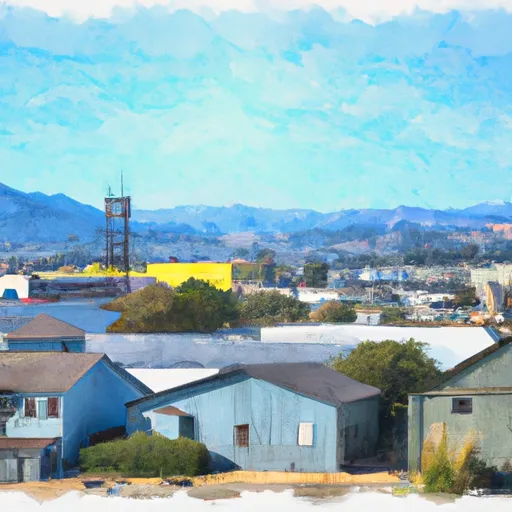-
 Snoflo Premium
Snoflo Premium
Get unlimited access to all our content
With no Ad interruptions! - Start Your Free Trial Login with existing account
Posey
Eden Index
Climate
9.5
•
Recreation
6.4
•
Community
•
Safeguard
6.1/10

Posey, California is a small community nestled in the scenic Sierra Nevada Mountains. The climate in Posey is mild, with warm summers and cool winters. Average temperatures range from the upper 80s°F (30s°C) during summer to the mid-40s°F (7-9°C) in winter. The region receives an average annual rainfall of approximately 30 inches, with most precipitation occurring during the winter months.
Posey is blessed with abundant hydrology constituents, including several creeks and streams that flow through the area. These water sources not only enhance the natural beauty of the surroundings but also provide opportunities for outdoor recreation. Anglers can enjoy fishing for various trout species in the nearby waterways. Additionally, the hydrology constituents create breathtaking waterfalls and picturesque hiking trails for nature enthusiasts to explore.
Outdoor recreation opportunities in Posey are plentiful and cater to all interests. The surrounding mountains offer excellent hiking, camping, and bird-watching opportunities. Posey is a gateway to the Sequoia National Forest, known for its giant sequoia trees and stunning vistas. Visitors can also explore the nearby Kern River, which provides opportunities for river rafting, kayaking, and swimming.
In conclusion, Posey, California offers a pleasant climate, rich hydrology constituents, and a plethora of outdoor recreation opportunities, making it an ideal destination for nature lovers and adventure seekers.
What is the Eden Index?
The Snoflo Eden Index serves as a comprehensive rating system for regions, evaluating their desirability through a holistic assessment of climate health, outdoor recreation opportunities, and natural disaster risk, acknowledging the profound impact of these factors on livability and well-being.
Climate Health Indicator (CHI): 9.5
Posey receives approximately
744mm of rain per year,
with humidity levels near 36%
and air temperatures averaging around
12°C.
Posey has a plant hardyness factor of
8, meaning
plants and agriculture in this region tend to thrive here all year round.
By considering the ideal temperature range, reliable water supplies, clean air, and stable seasonal rain or snowpacks, the Climate Health Indicator (CHI) underscores the significance of a healthy climate as the foundation for quality living.
A healthy climate is paramount for ensuring a high quality of life and livability in a region, fostering both physical well-being and environmental harmony. This can be characterized by ideal temperatures, reliable access to water supplies, clean air, and consistent seasonal rain or snowpacks.
Weather Forecast
Streamflow Conditions
Tulare-Buena Vista Lakes
Area Rivers
Tulare-Buena Vista Lakes
Snowpack Depths
Tulare-Buena Vista Lakes
Reservoir Storage Capacity
Tulare-Buena Vista Lakes
Groundwater Levels
Recreational Opportunity Index (ROI): 6.4
The Recreational Opportunity Index (ROI) recognizes the value of outdoor recreational options, such as parks, hiking trails, camping sites, and fishing spots, while acknowledging that climate plays a pivotal role in ensuring the comfort and consistency of these experiences.
Access to outdoor recreational opportunities, encompassing activities such as parks, hiking, camping, and fishing, is crucial for overall well-being, and the climate plays a pivotal role in enabling and enhancing these experiences, ensuring that individuals can engage in nature-based activities comfortably and consistently.
Camping Areas
| Campground | Campsites | Reservations | Toilets | Showers | Elevation |
|---|---|---|---|---|---|
| Hungry Gulch | 78 | 2,766 ft | |||
| Boulder Gulch | 78 | 2,599 ft | |||
| Sandy Flat | 35 | 2,259 ft | |||
| Keyesville Rec Site | None | 2,526 ft | |||
| Tillie Creek | 159 | 2,630 ft | |||
| Breckenridge | 8 | 6,690 ft | |||
| Hobo | 25 | 2,284 ft | |||
| Evans Flat | 16 | 6,087 ft | |||
| Camp 9 | 109 | 2,619 ft | |||
| Auxiliary Dam | 250 | 2,635 ft |
Nearby Ski Areas
Catastrophe Safeguard Index (CSI):
The Catastrophe Safeguard Index (CSI) recognizes that natural disaster risk, encompassing floods, fires, hurricanes, and tornadoes, can drastically affect safety and the overall appeal of an area.
The level of natural disaster risk in a region significantly affects safety and the overall livability, with climate change amplifying these risks by potentially increasing the frequency and intensity of events like floods, fires, hurricanes, and tornadoes, thereby posing substantial challenges to community resilience and well-being.
Community Resilience Indicator (CRI):
The Community Resilience Indicator (CRI) recognizes that education, healthcare, and socioeconomics are crucial to the well-being of a region. The CRI acknowledges the profound impact of these elements on residents' overall quality of life. By evaluating educational resources, healthcare accessibility, and economic inclusivity, the index captures the essential aspects that contribute to a thriving community, fostering resident satisfaction, equity, and social cohesion.

